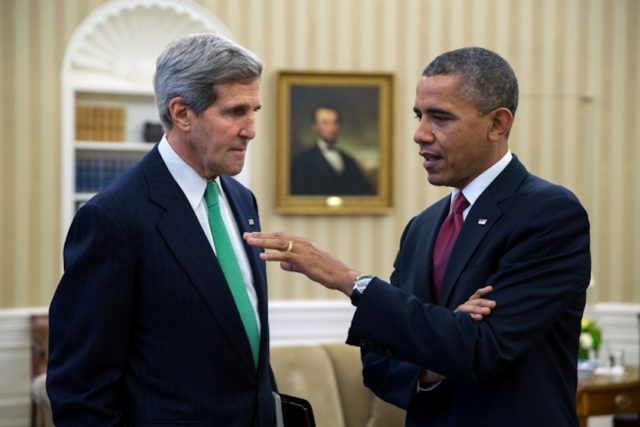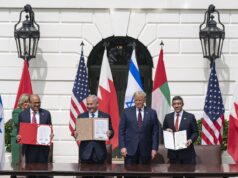
President Obama might sandbag Israel in pursuit of something Palestinian leadership rejects — peace with the Jewish state. The blow reportedly may fall in the interregnum between the Nov. 8 election and the Jan. 20 inauguration of the next president.
Apparently George Santayana’s observation that those who don’t remember the past are condemned to repeat it still holds. A little history then, for the next administration if not this one:
One of President Bill Clinton’s most frequent White House guests was Yasser Arafat. The Palestine Liberation Organization chairman dropped in a reported 13 times, and the two met elsewhere on another 11 occasions.
The focus of the meetings was the Palestinian-Israeli “peace process.” The effort failed. At Camp David in July 2000 and in Taba, Egypt in January 2001, Arafat rejected U.S.-Israeli offers of a West Bank and Gaza state — with eastern Jerusalem as its capital — in exchange for peace with Israel. Instead, he launched the bloody second Intifada in September 2000 and continued it long after Taba.
With that in mind, President George W. Bush refused to welcome Arafat to the White House. However, he repeatedly sent Condoleezza Rice — first as national security adviser and later as secretary of state — to the region.
But Miss Rice’s labors to advance Palestinian-Israeli diplomacy proved fruitless. Though Arafat and his successor as head of the PLO and Palestinian Authority, Mahmoud Abbas, said they recognized Israel, they refused to accept it as a Jewish state, insisted on a nonexistent Palestinian “right-of-return” and refused to accept a “two-state solution” if doing so meant an end to the conflict rather than just its next phase.
Regardless, Mr. Obama made achieving Israeli-Palestinian peace, along with a nuclear deal with Iran, top priorities. According to Dennis Ross, a special adviser to Secretary of State Hillary Clinton, Mr. Obama believed putting “distance” between the United States and Israel would help.
Administration policy apparently stemmed from belief that the Israeli-Palestinian tail wags the Middle East dog.
“To defeat [the Islamic State in Iraq and Syria], the Israeli-Palestinian conflict must be resolved; a top Obama administration staffer admits that the long-running conflict is an obstacle to regional peace,” asserted an Al Jazeera America commentary by Rami Khouri. Mr. Khouri is a veteran Middle East journalist and now a senior fellow at Harvard University’s Kennedy School of Government. He enlarged U.S. National Security Council staffer Robert Malley’s inversion to opine “the Israeli-Palestinian conflict has been the single most radicalizing and destabilizing force in the Middle East for nearly a century.”
This cart-before-the-horse error persists in spite of all evidence to the contrary. The Israel-Palestinian conflict has had little or nothing to do with numerous and much larger upheavals in the Middle East. These have included:
• The 1979 ouster of the Shah of Iran, that country’s subsequent rule by a theocratic police state and Shiite Iran’s struggle against Sunni powers such as Saudi Arabia.
• The 1980-88 war between Saddam Hussein’s Iraq and Ayatollah Ruhollah Khomeini’s Iran.
• Algeria’s military coup of 1992, staged to prevent the Islamic Salvation Front from claiming the parliamentary plurality it won in elections. This led to a civil war that cost an estimated 50,000 to 100,000 lives.
• The Sept. 11, 2001 attacks by Osama bin Laden’s al Qaeda. These did not kill nearly 3,000 Americans and foreign nationals because of the Palestinian conflict with Israel or U.S. support of the Jewish state, though that was a useful secondary justification. Bin Laden primarily hoped to overthrow what he considered the corrupt Saudi dynasty, end the sacrilegious presence of American and other Western forces on holy Islamic soil and re-establish the Sunni caliphate.
• Arab Spring upheavals from Tunisia and Libya through Egypt and Yemen to Syria — where nearly 500,000 people have died in that country’s civil wars since 2011 and millions have been displaced as refugees.
Turmoil in the greater Middle East, journalist Lee Smith argues in “The Strong Horse: Power, Politics and the Clash of Arab Civilizations,” stems mostly from failure by leaders of the Sunni Arab majority to modernize if not westernize, that majority’s repression of numerous minorities including Shia Muslims, Christians, Kurds, Jews and others, and the challenge to authoritarian “secular” regimes by Islamist movements.
Note to next administration: The Israeli-Palestinian conflict is much more a symptom than a cause.





